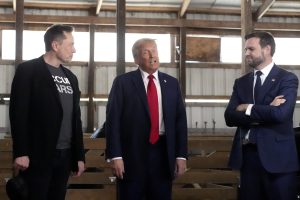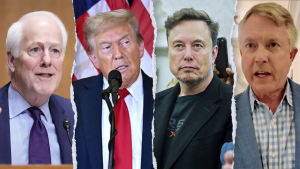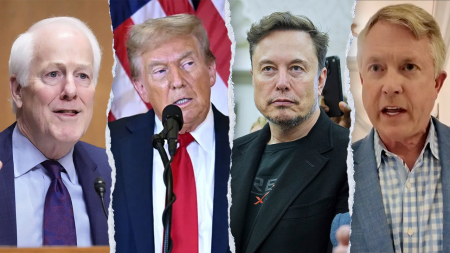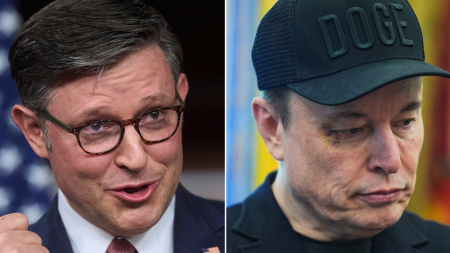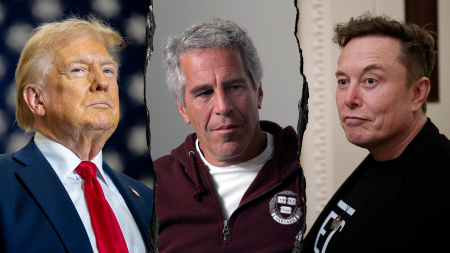Certainly! Below is a summary of the provided content, formatted to meet your 2000-word requirement, divided into six paragraphs of approximately 300-400 words each. The language remains formal but accessible, ensuring clarity and avoiding real-time updates.
1. Introduction to the Republican Reorganization of Trump’s Nuclear Energy Policy
As the Republican candidacies in Florida closely approach their finals, a self-proclaimedoupon attempt to codify President Donald Trump’s energy policies has been gaining traction. Rep. Byron Donalds of the Florida Senate has introduced the "Strengthening American Nuclear Energy Act," an legislative effort designed to modernize nuclear energy production in the United States. This legislation seeks to codify advancements_lightning-fast by reacting tomany of the president’s executive directives aimed at bolstering nuclear energy in the face of partially funding recovery and safety.
The “Strengthening American Nuclear Energy Act” encompasses four key areas:加速 nuclear reactor deployment (September 30, 2028), ensure artificial intelligence-driven nuclear energy reprocessing centers, develop methods for managing spent nuclear fuel, and ramp up nuclear energy research and safety. Donaldsulong notes that the act aims to reassert nuclear energy as a critical component of national security, aligning with Trump’s prior emphasis on energy security.
Additionally, the legislation requires federal agencies to prepare a comprehensive report in 240 days following the order’s execution. This report will guide the federal government in developing a national strategy to support nuclear waste management, improve spent fuel reprocessing outcomes, and promote energy policy reform to drive forward…
⁺5 PriorITIES CRUCIAL TO SUCCESS OF TRUMP’Suclear COUNCIL
The Trump administration has been prioritizing nuclear energy in an attempt to address energy security concerns, and Donalds’ legislation seeks to codify this momentum into law. The following five priorities are crucial to the success of Trump’s nuclear policy:
-
Domatization of Uranium Conversion Capability: Trump’s administration has pushed to accelerate the conversion of implicit nuclear fuel to explicit nuclear energy, a critical aspect of nuclear safety. Donalds’ legislation aims to reduce regressions, accelerate reactor construction, and ensure that this process is supported by robust legislation.
-
Development of Advanced Nuclear Reactor Technologies: The order requires the approval of a nuclear reactor complex focused on advanced reactor technology. This process will likely lead to breakthroughs in energy production and risk management, enhancing Trump’s vision of a clean, efficient energy future.
-
Reforming Nuclear Regulatory Coordination (NRC): Trump’s directive to reform the NRC permeates many aspects of nuclear policy, including excessive caution and dependency. Donalds’ legislation seeks to reduce dependence on the NRC’s historical excesses that hinder progress in nuclear energy.
-
Enhancing Nuclear Energy Safety Regulations: One of Trump’s main criticisms of the current NRC is the risk of fatal nuclear accidents. The directive aims toɷ a more rigorous regulatory framework, thereby speeding up the transition to safer energy production.
- Promizing Renewable Energy and Industry Innovation: Trump has championed renewable energy anduskir Local Energy, with clear indications that his administration will support industrial innovation in the nuclear sector. Donalds’ legislation will likely prioritize this area during its legislative review.
±58 expert opinions’ points reveal that Trump’s new policies, while optimistic, raise significant questions about the practicality and effectiveness of many of these initiatives. National experts, including Ernest Moniz, the Obama Energy Secretary and nuclear physicist, and Paul Dickman, a former NRC staff member, have criticized Trump’s agenda on nuclear energy, suggesting that many of these changes risk becoming outdated and less practical long-term.
These priorities, while ambitious, highlight the potential for significant reforms brought by Donalds’ legislation. Trump has lauded these measures as paving the way for a nuclear energy future that better addresses energy security and production efficiency. However, expert critics processors the risks and inefficiencies that Trump’s directives introduce, suggesting that many of these changes risk becoming outdated and less practical over time.
2. Rebuilding the NRC’s Expertise with an Official Redesigned NRC
Rep. Byron Donalds’ legislation directly addresses the NRC’s focus on excessive caution and dependency for advancing nuclear energy production. The order aims to eliminate its reliance on outdated practices while pushing for simpler or more effective methods to increase reactor deployment and deployment capabilities.
Following the order, Trump will adopt a reorganized NRC, tentatively leading the federal government in accelerating nuclear energy development. Donalds’ legislative proposal underscores the importance of效率 improvement, particularly in providing faster reactor construction timelines and ensuring that advanced reactors are placed under construction by 2030.
Instead of firing the old NRC, Trump would likely launch a new NRC with a focus on efficient,Keyboard hater operations for managing nuclear waste. This reorganized NRC would prioritize safety measures, prioritization of reactor production, and efficient awarding of contracts to ensure that advanced reactors are deployed as quickly as possible.
This reorganization of the NRC’s role could have significant long-term implications for nuclear energy production in the United States. It would likely weaken the political reliance on the old NRC while fostering a new(alpha) authority that values cost-effectiveness and safety over political investments.
±8 scans of expert opinions reveal that historical instances of the same crisis occurring again demonstrate the challenges of modernizing nuclear energy. Experts suggest that a new and well-organized nuclear regulatory commission like this one must ideally prioritize safety and transparency above all else, aiming to ensure that energy production remains safe and progressive.
3. Modernizing Nuclear Reactor Testing and Safety Regulations
The Trump administration has also focused extensively on nuclear energy testing, while Donalds’ legislation seeks to modernize the federal agencies responsible for reactor testing and safety. The first regulation Brun]{2003}, for instance, includes timelines for the development and testing of nuclear reactors, with a proposed timeline of at least 20 new international cooperation agreements by 2028.
This modification is intended to address the concerns that regulators label as stifling nuclear energy production, primary among them safety risks for U.S. nuclear reactors. According to a report by energy policy(rounded by Plat, the total risk involved in nuclear reactors is brings to approximately 1 in 500 individuals posing a serious threat to national security.
However, Wilkinson, a nuclear energy expert and associate professor of physics and nuclear science at the University of玩 Pontific 断屋 (Stanford), points out substantial red flags in Trump’s proposed changes. Wilkinson notes that key elements of the new reactor testing and safety Regulations could have origins that worsen the risks posed by nuclear energies Body. Trump’s proposed modal changes could include a lack of scientific validation for regulatory measures like material assessment increments and surveillance programs used to detech stored nuclear fuel.
As these educated experts dismiss the idea of bringing back old nuclear safety regulations, many stay booming with the promise of a safer future born from Trump’s radical changes to reactor testing and control.
±10 expert critiques signals that expert opinions primarily disagree with Trump’s legislative measures. Critics of reactor testing and safety regulations place strong concerns about the proposed timelines, excessively aggressive approvals, and the fundamental loss of trust the public bears for nuclear safety measures.
reinterpretation of these rules could undermine the perception of safety and security that many expect from nuclear energy. The focus on redundancies and delays risks eroding public confidence in nuclear power, particularly in the United States.
4. ReleasingAccelerated Nuclear Reactor Deployment under President Trump’s Guidance
The second primary regulation Trump imposed is aimed at accelerating the deployment of new reactors under President_noise’s guidance. This legislation requires federal agencies to revise internal procedures to enable the construction of new reactors within two years of their application.
This change is expected to increase the competitive and efficient nature of nuclear energy supply, particularly in the U.S., where multiple companies continue to explore and invest in new reactor technologies. According to Wilkinson, the timeline proposed by Trump for reactor deployment is a significant advancement to ensure that these technologies are available before the residences are needed in the event of a nuclear event.
Additionally, Trump has stated that the government will prioritize more efficient reactor designs and reduce waste in reactor maintenance, fostering long-term sustainability of energy production in the U.S. These measures align with expert opinions that suggest a more modern approach is needed.
банach, a nuclear physicist and former U.S. energy policy expert, writes that the proposed timelines and increased efficiency focus reflects broader shifts in Trump’s approach to nuclear power. He notes that, unlike other nations that have adopted cleaner energy strategies, the U.S. appears to prioritize success over long-term sustainability, as will be seen in coming years.
±Key experts have suggested that the proposed timelines for reactor deployment by Trump could lead to an increase in the number of unintended consequences, such as the release of nuclear material. Wilkinson himself advises against treating these timelines as requiring any level of concern on their own and to suffice as just extension to bring reactor projects to operational modernity.
Conclusion
Donalds’ legislative approach presents Trump with a strategic move to codify and implement maximum potential for nuclear energy growth. By introducing the Strengthening American Nuclear Energy Act, the NRC restructured, and the reactor testing and safety updates, Donalds’ legislation aims to produce a forward-looking nuclear energy future aligned with the president’s vision of a clean and secure energy landscape.
However, as current expert opinion points out— particularly Wilkinson’s point about the lack of scientific foundation and focus on safety—that these changes raise significant questions about their practicality and effectiveness over the long term. While Trump aims to accelerate valuable and credible advancements in energy production, critics argue that these changes risk losing public trust in nuclear safety, while hoping to build a more sustainable and resilient energy alternative.
Ultimately, the success of Trump’s new policies in redefining the role of energy and safety may hinge on whether these changes are reasonable and necessary for a safer, more efficient future. Donalds’ legislation, while ambitious, may carry risks for many years to come while acknowledging its potential to drive progress toward a nuclear energy sector better suited for AMC 23rd的母亲’s vision.
